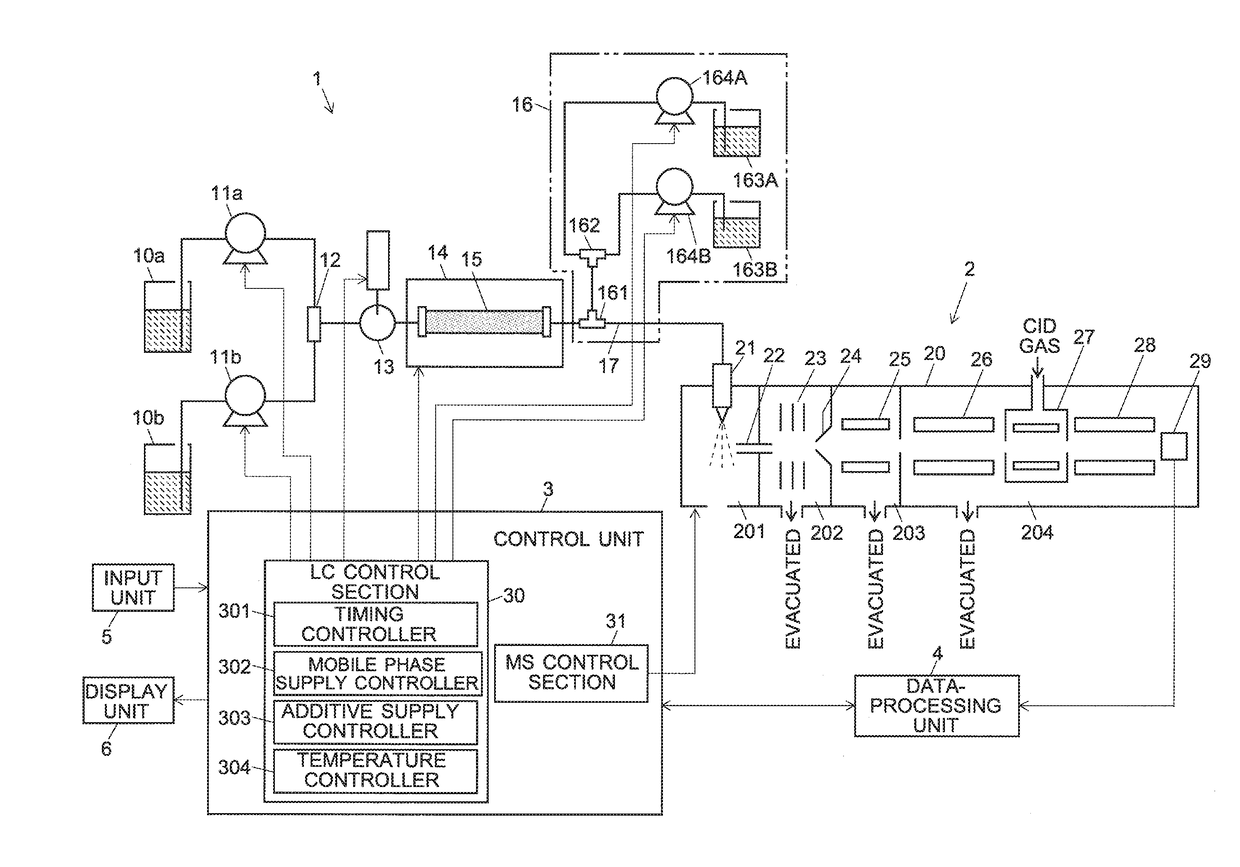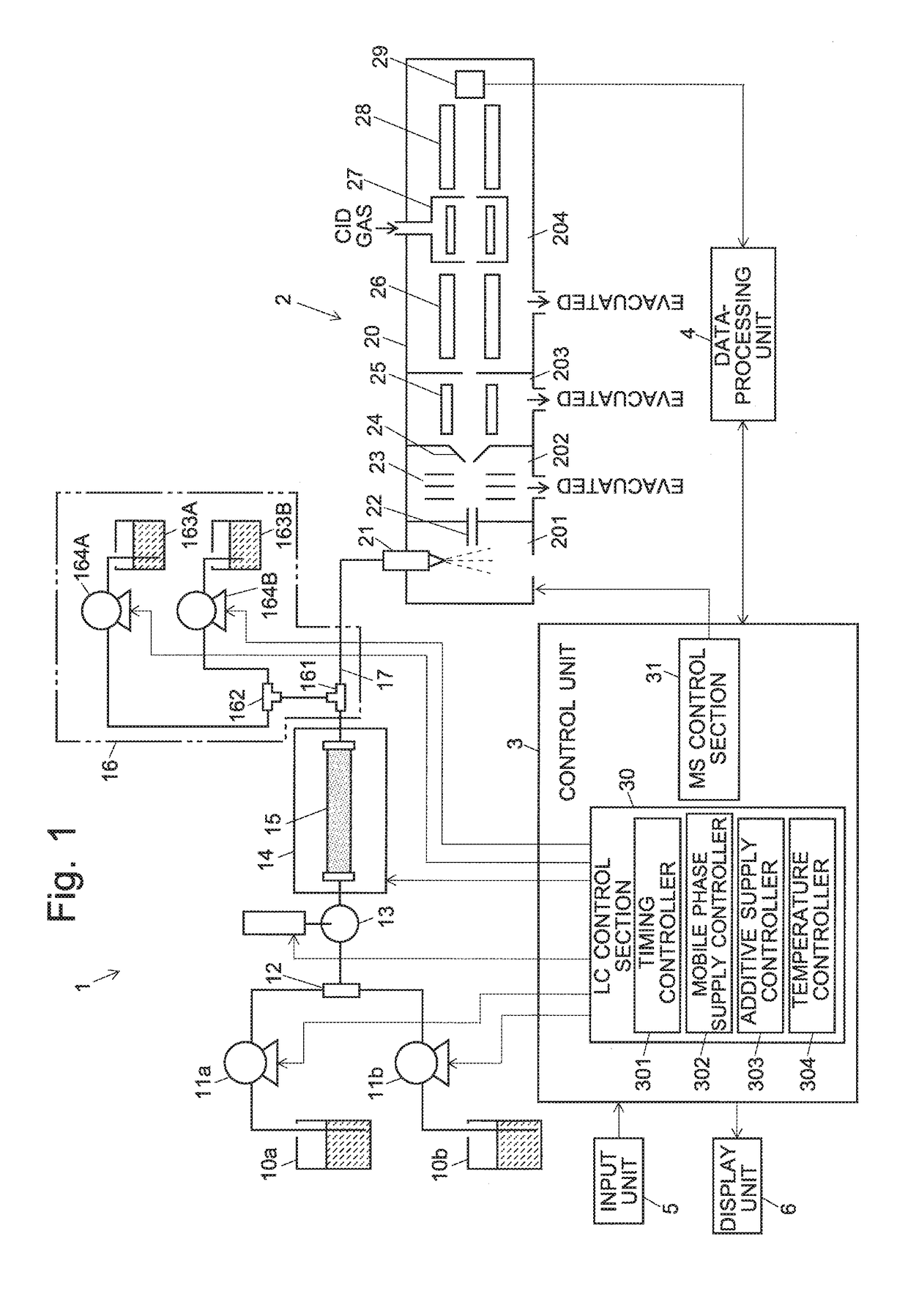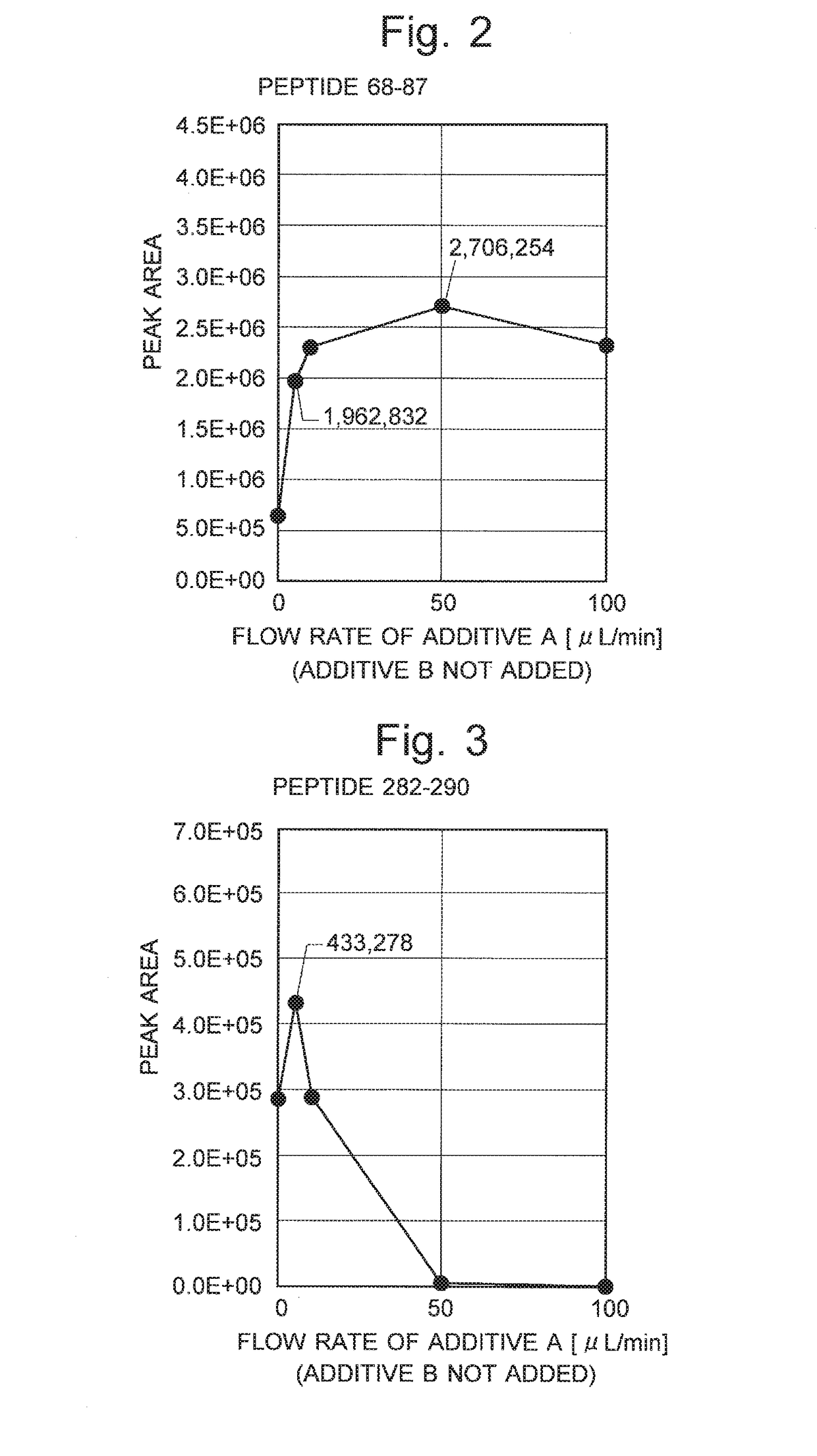Method for liquid chromatographic mass spectrometry and liquid chromatograph mass spectrometer
- Summary
- Abstract
- Description
- Claims
- Application Information
AI Technical Summary
Benefits of technology
Problems solved by technology
Method used
Image
Examples
experiment 1
[0051][Experiment 1]
[0052]The measurement conditions were as follows:
[0053]Compounds subjected to the measurement: two kinds of peptides of tau proteins, 68-STPTAEDVTAPLVDEGAPGK-87 (molecular ion: [M+2H]2+, molecular weight: 978.5540) and 282-LDLSNVQSK-290 (molecular ion: [M+2H]2+, molecular weight: 502.5643)
[0054]Flow velocity of mobile phase: 100 μL / min (binary gradient)
[0055]Mobile phase a: 0.1% formic acid (FA)
[0056]Mobile phase b: 0.1% formic acid / acetonitrile
[0057]Additive A: 10% dimethyl sulfoxide (DMSO; flow rate: 0-100 μL / min)
[0058]Additive B: 2-propanol (flow rate: fixed at 0 μL / min, i.e. not added)
[0059]Mode of mass spectrometry: MRM measurement (peptide 68-87: m / z 978.5540>884.4628; peptide 282-290: m / z 502.5643>229.2538)
[0060]FIG. 2 is the result of the measurement of the relationship between the flow rate of additive A and the peak area value on the mass chromatogram for peptide 68-87. FIG. 3 is the result of the measurement of the relationship between the flow rate of...
experiment 2
[0062][Experiment 2]
[0063]The measurement conditions were as follows:
[0064]Compounds subjected to the measurement: the same as in Experiment 1
[0065]Flow velocity of mobile phase: 100 μL / min (binary gradient)
[0066]Mobile phase a: 0.1% formic acid (FA)
[0067]Mobile phase b: 0.1% formic acid / acetonitrile
[0068]Additive A: 10% dimethyl sulfoxide (flow rate: fixed at 5 μL / min)
[0069]Additive B: 2-propanol (flow rate: 0-200 μL / min)
[0070]Mode of mass spectrometry: the same as in Experiment 1.
[0071]FIG. 4 is the result of the measurement of the relationship between the flow rate of additive B and the peak area value on the mass chromatogram for peptide 68-87. FIG. 5 is the result of the measurement of the relationship between the flow rate of additive B and the peak area value on the mass chromatogram for peptide 282-290. As shown in FIGS. 4 and 5, for both peptides, the highest sensitivity (approximately 4.28×106 and 6.6×105) was obtained when the flow rate of additive B (2-propanol) was 150 ...
PUM
 Login to View More
Login to View More Abstract
Description
Claims
Application Information
 Login to View More
Login to View More - R&D
- Intellectual Property
- Life Sciences
- Materials
- Tech Scout
- Unparalleled Data Quality
- Higher Quality Content
- 60% Fewer Hallucinations
Browse by: Latest US Patents, China's latest patents, Technical Efficacy Thesaurus, Application Domain, Technology Topic, Popular Technical Reports.
© 2025 PatSnap. All rights reserved.Legal|Privacy policy|Modern Slavery Act Transparency Statement|Sitemap|About US| Contact US: help@patsnap.com



